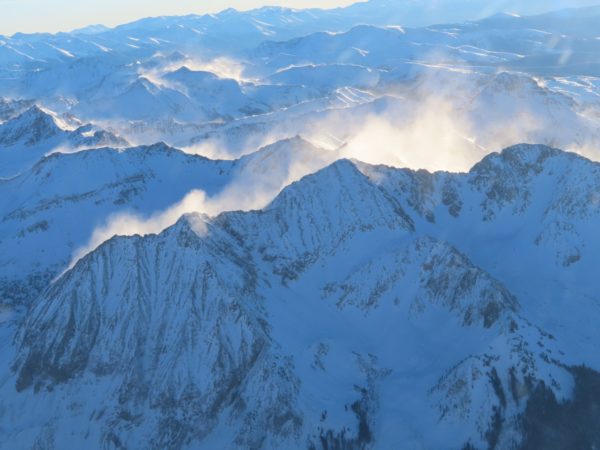Snow that is visibly drifting across the snow surface or off of terrain features. A sign of instability.
When you see blowing snow, it means that winds are sufficiently strong enough and the snow surface is sufficiently soft enough to support wind transport and wind loading. The loading pattern of drifting snow generally points towards the most dangerous slopes.
A plume of snow is a large quantity of airborne snow, often seen near ridges and peak crests during periods of strong and extreme winds. They can sometimes be mistaken for clouds. When you can see the snow pluming into the air, it is a clear indication of strong winds aloft. You may see plumes occurring in high, alpine terrain while not experiencing any noticeable wind or blowing snow at lower elevations. If plumes are loading terrain features, this should alert you to the potential for increased hazard as you gain elevation.

Even if you can’t see wind loading of avalanche terrain, it is probably happening if you observe blowing snow around you. Credit: FortsAskOnline

Snow plumes off of peaks indicate snow transport and potential wind loading at higher elevations. Credit: Crested Butte Avalanche Center
